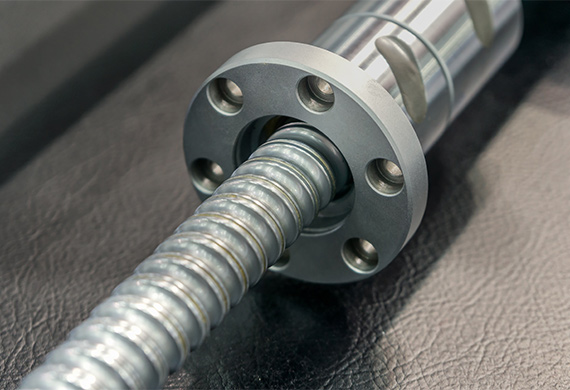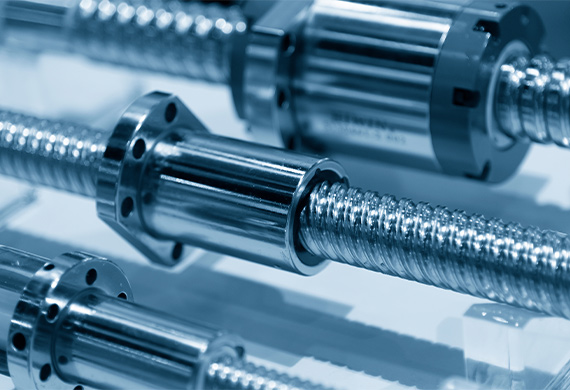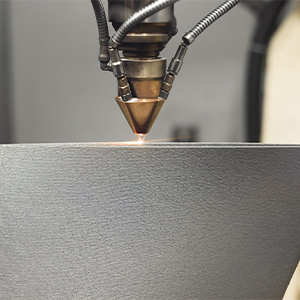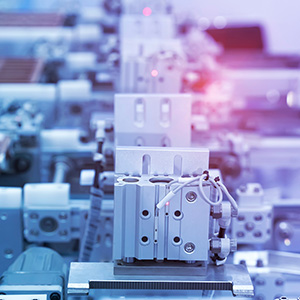Ball Screw or Lead Screw
Post By: Tom Rowse On: 05-12-2022 - Manufacturing
Many automation environments rely on motion-driven applications. These often have to convert one type of motion, such as rotary, into another type of motion, such as linear. This is where screws come in. They can be either ball screws or lead screws, but both comprise a cylindrical metal shaft coupled with a screw, to form a mechanical linear actuator.
The screw shaft is a rod with either single or multiple grooves carved in it, which spiral around it in a helix pattern. This forms the external thread. The thread is the means by which the rotational motion is converted into linear motion. This happens when the nut slides along the screw shaft. To do this, a lead screw nut mates its internal thread with the screw shaft’s external thread. A ball screw employs recirculating ball bearings to perform the same function.
How Do Lead Screws Work?
A lead screw is a threaded nut with a cylindrical section. It can either be made from a metal, such as bronze or stainless steel, or a polymer composite. Either the screw shaft is driven to turn while the nut travels down its length, or the screw shaft remains static and the nut turns instead. Lead screws require you to mate the threads, so you need to determine whether nuts and screws have male or female threads. The threads are cut deeper and the two parts generally require lubrication to function effectively.
Both shaft and nut are directly engaged by means of the mated threads, and the helical design guides their movement. Both parts are continually sliding against each other over a fairly extensive contact area, which causes a lot of friction. This leads to greater energy losses, although lead screw thread design is changing to help address this problem.
Lead screws are typically used for lighter-duty or more compact applications. They can more easily be customised and are therefore good for OEM applications. The most common objection to lead screws is that they are slower, less accurate, and lack rigidity or precision.
How Do Ball Screws Work?
A ball screw deals with the friction problem between the screw shaft and the nut by using ball bearings. Because the balls are continuously rolling inside the nut, the friction associated with sliding is vastly reduced. On a ball screw, the nut and the screw are carved with matching helical grooves that form ball races, in which the ball bearings recirculate. The rolling balls reduce the amount of direct mechanical contact taking place inside the screw assembly. Substituting rolling friction for sliding friction makes the power conversion infinitely more efficient.
A ball screw nut is comprised of a cylinder with the ball bearings inside it and the system by which they’re recirculated. It also has internal ball grooves that match the screw shaft grooves. The balls are generally made of steel, and these form the contact points between the nut and the screw shaft. The number of these contact points can be determined by their groove profile. The most common designs are the circular arc profile and the gothic arc profile.
The circular arc profile has a semicircular shape that permits one contact point for the ball on the nut and one on the screw shaft. The gothic arc profile is more common, with two intersecting arcs permitting two contact points for the ball on the nut and two on the screw shaft.
Why Choose A Ball Screw Or Lead Screw?
Ball screws and lead screws are both types of mechanical actuator, and each type has its own advantages and disadvantages. On the face of it, lead screws are just cheaper. However, choosing the right type of screw to use in your application is a lot more complicated than that.
Advantages Of Ball Screws
- Less Friction
- Require Less Torque
- Generate Less Heat
- Greater Efficiency
- Longer Lifespan
Disadvantages Of Ball Screws
- More Expensive
- Generate More Noise
- Can Be Problematic In Vertical Applications
- Require Braking Systems To Avoid Back-Driving
- Require Lubrication To Attain Design Life

Advantages Of Lead Screws
- Cost Less
- Self-Locking, Need No Braking System
- Better For Vertical Applications
Disadvantages Of Lead Screws
- Require More Torque
- Require A Larger Motor And Drive
- Generate More Friction
- Generate More Heat
- Slower
- Less Efficient
- Shorter Lifespan

Lead screws are generally unsuitable for applications demanding high speed or throughput, or those with long or continuous cycle times. However, manufacturers are now producing precision lead screws that offer significant increases in accuracy. The newer generation of lead screws leverages material composition technologies and advanced thread-rolling processes. This results in lead screws that begin to match ball screws for precision and repeatability.
How To Decide: Ball Screw Or Lead Screw?
Whether you choose a ball screw assembly or lead screw assembly in your linear motion actuator depends on what you’re using it for. What are the critical parameters of your application? Will it be influenced by factors such as operating temperature or speed?
One of the most important factors you need to determine is how precise and accurate it must be. If precision is crucial to your application, you’ll probably go for a precision-engineered lead screw or a ball screw.
On the whole, ball screws are preferred for applications that demand:
- Precision
- Accuracy
- Efficiency
- Smooth Motion
- High Speed
- Prolonged Continuous Movement
Traditional lead screws are usually chosen for simple transfer applications, where these factors aren’t so critical.
The Final Decision
Before choosing between a ball screw or a lead screw for your application, you need to figure out each one’s distinct characteristics and how they best match your specific needs. There will inevitably be some compromise, depending on your application. To start with, the assembly design and materials are always important, not just accuracy. Some other important variables might include efficiency, longevity, maintenance, noise and wobble error. In most cases, the choice of ball screw or lead screw will be determined by evaluating the accuracy, load, and lead required by your application.
Get More From Rowse Straight To Your Inbox




